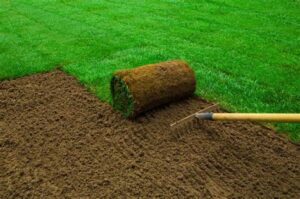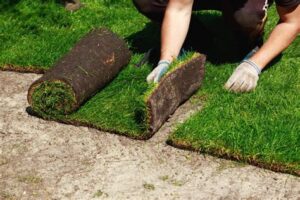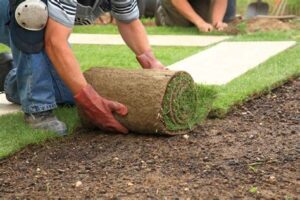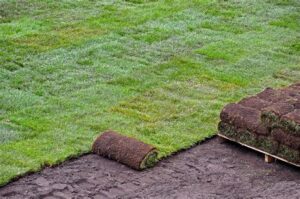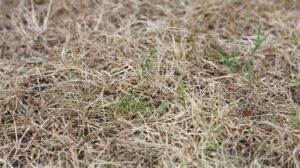Discover essential long-term care needs for newly installed sod, including maintenance routines, watering techniques, fertilization practices, and stress recognition tips.Installing sod can transform your landscape into a lush, green oasis, but ensuring its lasting beauty requires a solid long-term care strategy. In this article, we will guide you through essential practices that promote healthy sod growth and longevity. From understanding the specific care needs after installation to developing effective watering and fertilization routines, we’ll cover everything you need to know. Additionally, you’ll learn how to recognize signs of stress in your sod and address any issues promptly. Whether you are a seasoned gardener or a novice, our comprehensive guide will equip you with the knowledge and tools necessary to keep your sod thriving for years to come. Let’s dive into the key elements of long-term sod care and help you maintain that vibrant, carpet-like grass you love.
Understanding Long-Term Care Needs After Installing Sod
Once you have invested time and resources into installing sod, it is crucial to understand that the journey doesn’t end there. Adequate Long-Term Care involves implementing strategies that foster healthy and resilient grass. Maintaining your sod effectively not only enhances its appearance but also extends its lifespan and prevents common problems.
One of the first steps in overseeing the Long-Term Care of your sod is to establish a consistent routine. Regular checks for watering, fertilization, and mowing are essential elements that contribute to the overall health of your lawn. Each of these components plays a significant role in nurturing your sod to thrive in its environment.
Another vital aspect involves understanding the specific needs of the type of sod you have installed. Different varieties may require varying levels of water, sunlight, and nutrients. Familiarizing yourself with these requirements will allow you to tailor your Long-Term Care approach, ensuring that your lawn receives the right treatment.
Finally, climate and seasonality should be factored into your maintenance plans. Adapting your care strategies according to changes in weather conditions will help mitigate stress on your sod. For example, during dry spells, you may need to adjust your watering schedule to prevent dehydration, whereas in rainy seasons, proper drainage becomes crucial to avoid root rot.
In summary, effective Long-Term Care of sod hinges on creating and adhering to a comprehensive maintenance strategy that considers routine care, specific sod needs, and environmental factors. This careful attention will ultimately transform your newly laid sod into a lush, vibrant lawn.
Essential Maintenance Routines for Healthy Sod Growth
Maintaining the health of newly installed sod is crucial for ensuring it thrives in the long run. Proper care not only enhances the aesthetics of your lawn but also contributes to the overall longevity and robustness of the grass. Here are essential maintenance routines that focus on Long-Term Care for your sod.
| Maintenance Routine | Frequency | Tips |
|---|---|---|
| Regular Mowing | Once a week | Keep your mower blades sharp and set them at the recommended height for your sod type. |
| Weed Control | As needed | Use organic herbicides or manual methods to prevent unwanted weeds from taking root. |
| Pest Inspection | Bi-weekly | Check for signs of pests or diseases; act quickly to minimize damage. |
| Soil Aeration | Annually | Aerate your lawn to improve water and nutrient absorption. |
| Thatch Management | As needed | Remove excessive thatch buildup to promote healthy growth. |
Implementing these maintenance routines as part of your Long-Term Care plan will help ensure your sod remains healthy, lush, and resilient against stressors. Regular attention to these tasks can prevent larger problems down the line, rewarding you with a vibrant lawn that you can enjoy for years to come.
Watering Techniques for Optimal Long-Term Care
Proper watering is crucial for the Long-Term Care of your newly installed sod. Establishing an effective watering routine not only supports healthy root development but also minimizes the risk of disease and promotes lush growth. Here are some essential watering techniques to ensure your sod thrives.
1. Watering Schedule: Initially, it’s important to water your sod every day for the first week. This puts moisture into the soil and encourages roots to establish themselves. After the first week, you can gradually reduce frequency. Aim for deep watering sessions 2-3 times per week, allowing the top inch of soil to dry out before the next watering.
2. Time of Day: The best times to water your sod are early morning or late afternoon. Watering during these times minimizes evaporation and allows the grass to soak up moisture effectively. Avoid watering in the heat of the day to prevent scorching your sod.
3. Depth of Watering: Each watering session should aim to penetrate the soil to a depth of about 6 to 8 inches. This promotes deep root growth and helps the sod withstand periods of drought. You can use a soil moisture meter or simply check the soil with a spade to ensure adequate depth.
4. Adjusting for Weather Conditions: Always be mindful of local weather patterns. During hot, dry spells, you may need to increase your watering frequency. Conversely, during periods of rain, reduce or skip watering sessions to prevent waterlogging.
5. Sprinkler Systems vs. Hand Watering: If you’re using a sprinkler system, ensure it provides even coverage across your lawn. Hand watering can be effective for small areas but may require more time and effort to ensure uniform moisture distribution.
Implementing these watering techniques will significantly contribute to the overall health and vitality of your sod, making sure it receives the necessary hydration for optimal Long-Term Care. Remember, consistent monitoring and adjusting your practices based on your lawn’s specific needs will yield the best results.
Fertilization Practices to Enhance Sod Longevity
To ensure your sod thrives over the long term, effective fertilization practices are essential. Fertilization not only nourishes the grass, promoting robust growth, but also strengthens its resistance to pests and diseases. Here are some key practices to consider when fertilizing your sod:
- Soil Testing: Before applying fertilizers, conduct a soil test to determine nutrient deficiencies and pH levels. This will guide you in selecting the right fertilizer mix.
- Choose the Right Fertilizer: Opt for a balanced fertilizer with a suitable N-P-K (nitrogen, phosphorus, potassium) ratio based on your soil test results. For example, a ratio of 3-1-2 is often effective for most sod types.
- Timing Your Fertilization: The best time to fertilize your sod is during the growing season. For cool-season grasses, early spring and fall are optimal, while warm-season grasses thrive with fertilization in late spring and early summer.
- Application Techniques: Evenly distribute the fertilizer using a broadcast spreader. Be careful not to over-fertilize, as this can harm the grass and lead to excessive growth that requires more mowing.
- Frequency of Fertilization: Generally, fertilize your sod every 6-8 weeks during the growing season, but adjust this based on the specific needs of your grass type and local climate conditions.
- Watering After Fertilization: It’s crucial to water your sod after applying fertilizer. This helps to dissolve the nutrients and carry them down to the root zone, ensuring that your grass can absorb them effectively.
By adhering to these long-term care fertilization practices, you can enhance the longevity and health of your sod, resulting in a lush and vibrant lawn that endures through seasons and environmental challenges.
Recognizing Signs of Sod Stress and Addressing Issues
Recognizing signs of sod stress is crucial for ensuring the longevity and health of your lawn. Long-term care involves not just the initial installation but also ongoing monitoring and responsive actions to any stress indicators that may arise. Here are some common signs of sod stress and how to address them:
- Discoloration: If you notice patches of yellow or brown grass, it may indicate lack of water, nutrient deficiencies, or disease. Addressing this may involve adjusting your watering schedule or applying a suitable fertilizer.
- Thin or Bare Patches: Areas where the grass is sparse could be the result of poor soil quality, inadequate sunlight, or compaction. Aerating the soil and ensuring adequate sunlight can help revive these areas.
- Wilting or Curling: Grass blades that wilt or curl are often signs of insufficient moisture. Check your watering practices; deep, infrequent watering is usually more beneficial than shallow, frequent watering.
- Weed Growth: An increase in weed presence may suggest that your sod is stressed and unable to compete effectively. Regularly inspect for weeds and consider employing a pre-emergent herbicide, or hand-pulling as a method of control.
- Footprints Persisting: If footsteps remain visible on the lawn for an extended period after walking on it, this indicates that the grass is dehydrated or compacted. Enhance your watering practices and consider aeration to alleviate compaction.
By actively monitoring these signs and responding promptly, you can improve the overall health of your sod, ensuring its vitality and durability over time. Remember that consistent and effective long-term care will ultimately lead to a lush and vibrant lawn.
Frequently Asked Questions
What are the key benefits of installing sod?
Installing sod provides immediate greenery and erosion control, improves soil health, and enhances property aesthetics, making it a popular choice for lawns.
How soon after installing sod can I start watering?
You should start watering your sod immediately after installation to help establish the roots in the soil.
What is the recommended watering schedule for newly installed sod?
Initially, water your sod daily for the first 2-3 weeks, allowing the top inch of soil to remain moist. After roots are established, you can reduce to every 2-3 days.
How do I know when my sod is healthy?
Healthy sod will have a vibrant green color, bounce back after foot traffic, and produce roots that take hold within the soil when tugged gently.
What steps should I take for long-term care after installing sod?
For long-term care, ensure regular watering, mowing at the right height, applying nutrients as needed, and checking for pests or diseases periodically.
Is it necessary to fertilize new sod?
Yes, fertilizing new sod is important to help promote root development and overall growth, ideally using a starter fertilizer within the first few weeks.
What are common mistakes to avoid in sod maintenance?
Common mistakes include over-watering, neglecting mowing, using the wrong type of fertilizer, and ignoring signs of pest infestations or diseases.
